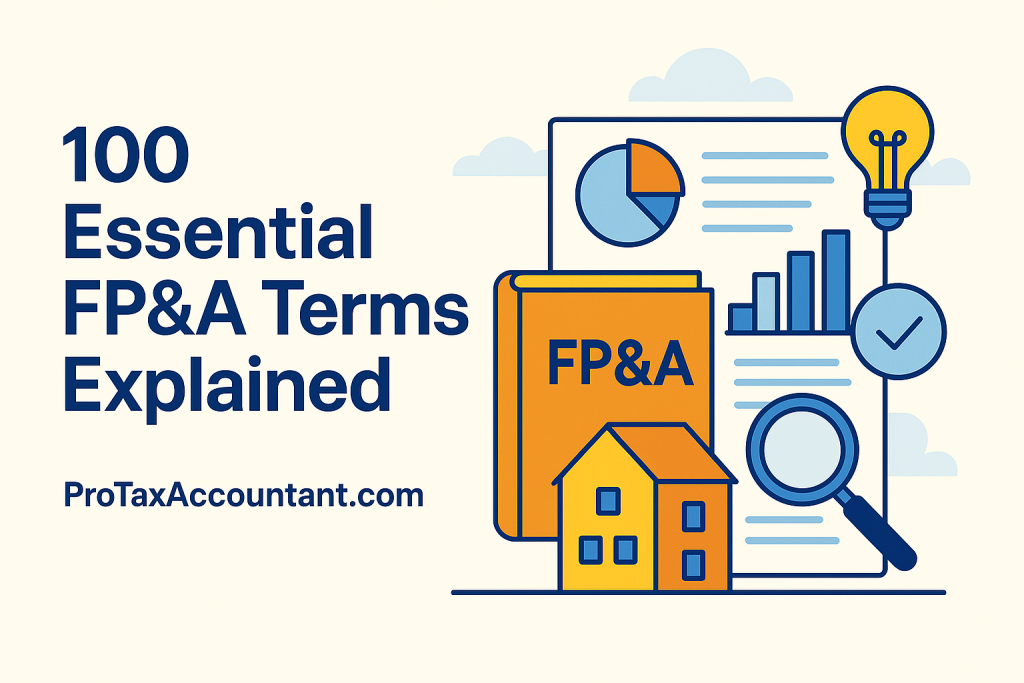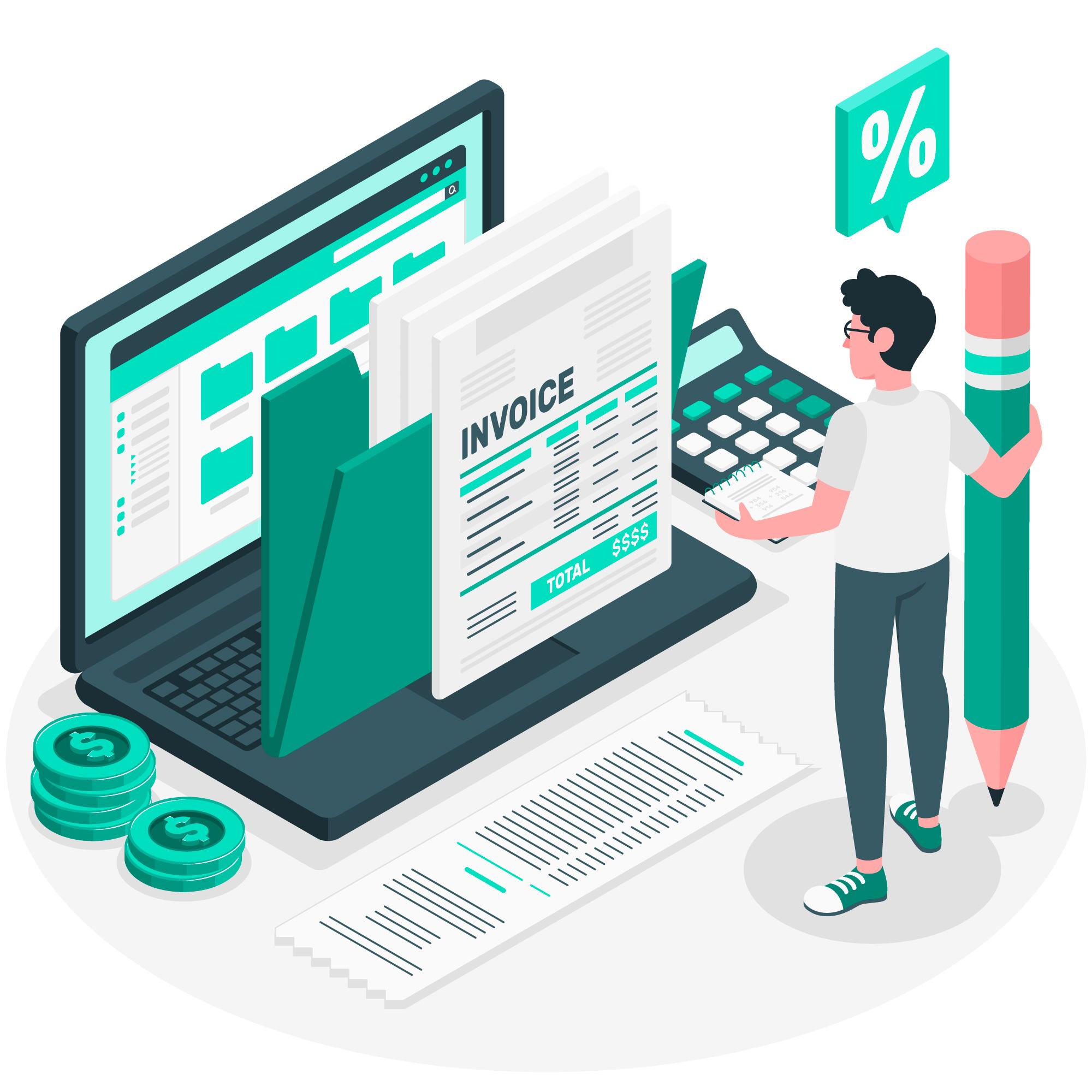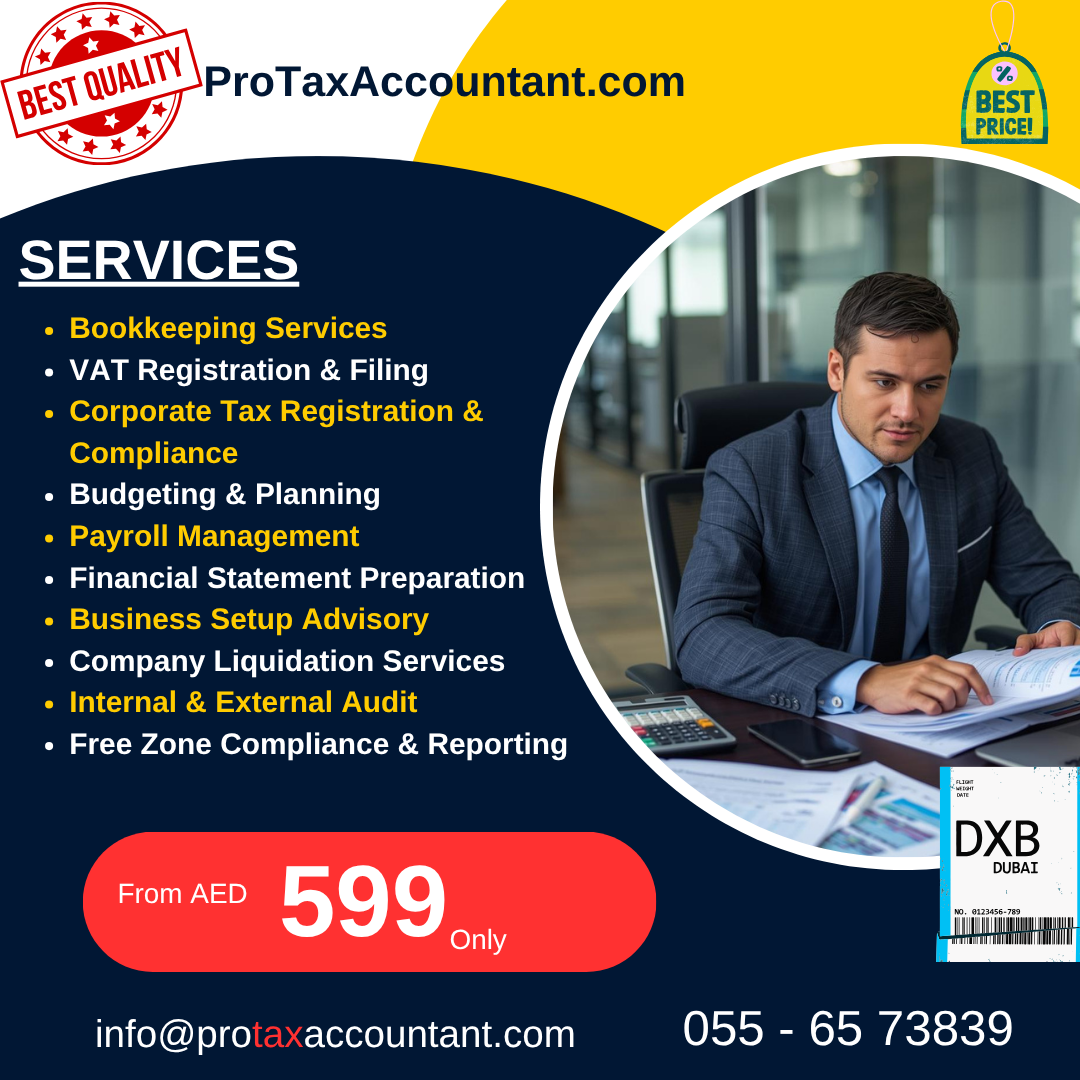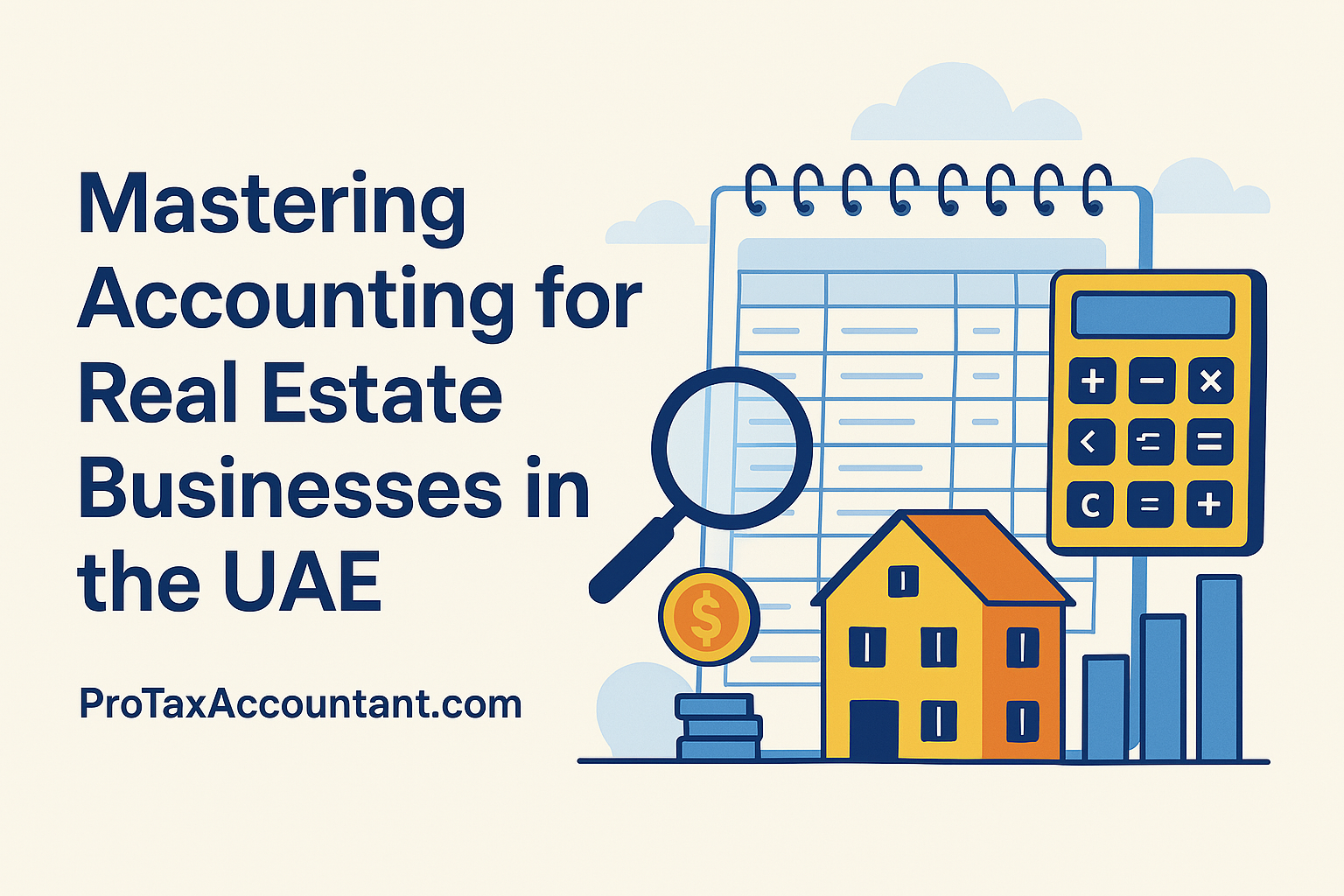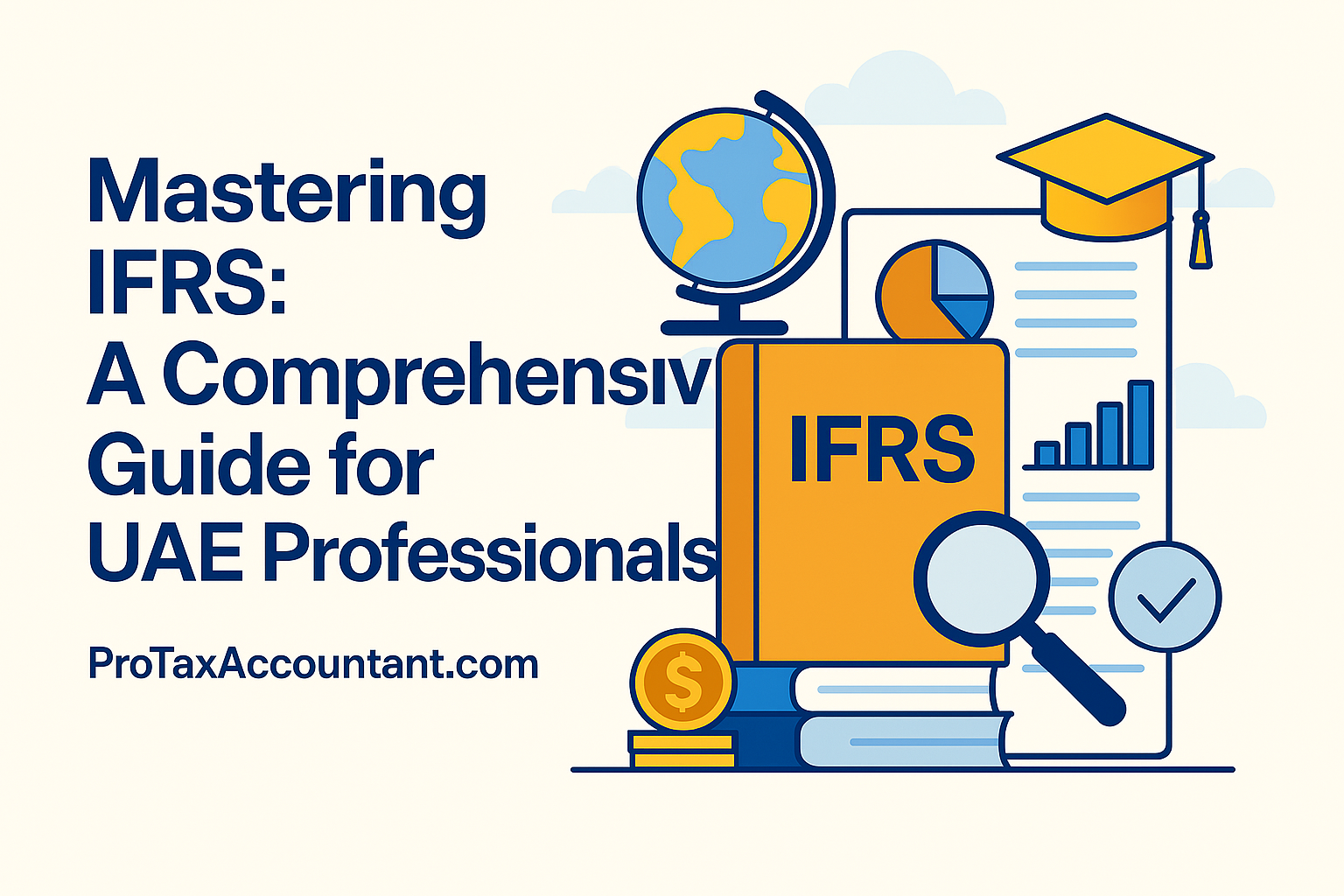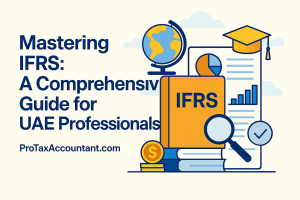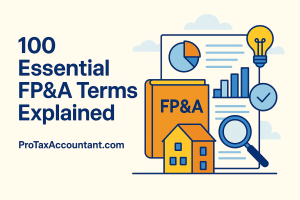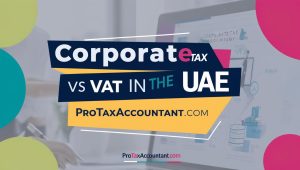Your Ultimate Guide to Financial Planning & Analysis Concepts, Metrics, and Tools.
Financial Planning & Analysis (FP&A) is the backbone of strategic decision-making in any organization. It involves forecasting, budgeting, variance analysis, and financial modeling to provide insights that drive business performance. To excel in this field, a solid understanding of its core terminology is crucial.
This comprehensive guide breaks down 100 essential FP&A terms, offering clear definitions, practical examples, and for key formulas, interactive calculators to help you solidify your understanding. We also highlight how effective FP&A, often supported by services like online accounting and virtual bookkeeping, can significantly benefit your business in the UAE.
Core FP&A Concepts
Financial Planning
The process of setting financial goals, developing strategies to achieve them, and creating a roadmap for managing an organization's financial resources.
Example: A company sets a goal to increase revenue by 15% next year and develops a financial plan outlining sales targets, marketing spend, and operational efficiencies to support this growth. This aligns with overall business budgeting principles.
Financial Analysis
The process of evaluating businesses, projects, budgets, and other finance-related transactions to determine their performance and suitability. This often involves reviewing financial statements. Learn how to analyze a balance sheet in under 2 minutes.
Example: An FP&A analyst reviews the quarterly income statement to identify trends in operating expenses and assess their impact on profitability.
Budgeting
The process of creating a detailed financial plan for a specific period, typically a fiscal year, outlining expected revenues and expenses. A well-crafted budget is crucial for business success.
Example: The marketing department creates a budget for the upcoming year, allocating funds for advertising campaigns, digital marketing, and event sponsorships.
Forecasting
The process of predicting future financial outcomes based on historical data, current trends, and anticipated events.
Example: Using past sales data and market growth projections, the FP&A team forecasts next quarter's revenue.
Variance Analysis
The quantitative investigation of the difference between actual and planned behavior. It helps identify reasons for deviations from the budget or forecast. This is a key aspect of financial variance analysis for small businesses.
Example: If actual sales were $90,000 against a budgeted $100,000, a variance analysis would investigate why there was a $10,000 negative variance.
Calculate Sales Variance:
Sales Variance:
Reporting
The process of presenting financial and operational data in a clear, concise, and actionable format to stakeholders. Effective reporting is key to understanding if financial reports state company goals.
Example: The FP&A team prepares a monthly performance report for the executive board, summarizing key financial metrics and budget vs. actuals.
Strategic Planning
The process of defining an organization's strategy, or direction, and making decisions on allocating its resources to pursue this strategy.
Example: A company's leadership team holds an annual strategic planning session to define long-term goals and initiatives for the next 3-5 years. This often ties into business setup in Dubai and identifying top business opportunities.
Key Financial Metrics
Revenue
The total income generated from the sale of goods or services related to a company's primary operations.
Example: A software company records $500,000 in subscription fees for the quarter, which is its primary revenue.
Cost of Goods Sold (COGS)
The direct costs attributable to the production of the goods sold by a company. This amount includes the cost of the materials used in creating the good along with the direct labor costs used to produce the good.
Example: For a manufacturing company, COGS includes the cost of raw materials, direct labor, and factory overhead directly tied to production.
Gross Profit
The profit a company makes after deducting the costs associated with making and selling its products, or the costs associated with providing its services. You can learn more about how to calculate gross profit.
Example: If a company has $1,000,000 in revenue and $400,000 in COGS, its gross profit is $600,000.
Calculate Gross Profit:
Gross Profit:
Operating Expenses (OpEx)
Expenses incurred from normal business operations, excluding COGS. This includes selling, general, and administrative (SG&A) expenses. Understanding these is crucial for managing overhead costs.
Example: Rent, salaries of administrative staff, marketing costs, and utility bills are all operating expenses.
Operating Income
A company's profit after deducting operating expenses from gross profit, but before deducting interest and taxes.
Example: If a company has a gross profit of $600,000 and operating expenses of $200,000, its operating income is $400,000.
Calculate Operating Income:
Operating Income:
Net Income
The total profit of a company after all expenses, including taxes and interest, have been deducted from revenue. Also known as the "bottom line." This is a key figure when you evaluate an income statement.
Example: After accounting for operating income, interest expenses, and taxes, a company reports a net income of $250,000 for the fiscal year.
EBITDA (Earnings Before Interest, Taxes, Depreciation, and Amortization)
A measure of a company's financial performance that can be used to evaluate a company's operating performance without having to factor in financing decisions, accounting decisions or tax environments. Dive deeper into understanding EBITDA.
Example: An analyst calculates a company's EBITDA to compare its operational profitability against competitors with different capital structures.
Cash Flow
The net amount of cash and cash equivalents being transferred into and out of a business.
Example: A positive cash flow from operations indicates that a company is generating enough cash from its core business to cover its expenses.
Working Capital
The difference between current assets and current liabilities. It indicates a company's short-term liquidity. Understanding if inventory is a current asset is part of this.
Example: A company with $500,000 in current assets and $200,000 in current liabilities has $300,000 in working capital.
Calculate Working Capital:
Working Capital:
Return on Investment (ROI)
A performance measure used to evaluate the efficiency or profitability of an investment or compare the efficiency of a number of different investments.
Example: An investment of $10,000 yields a profit of $2,000. The ROI is 20%.
Calculate ROI:
ROI:
Financial Statements & Accounting
Income Statement
A financial statement that reports a company's financial performance over a specific accounting period. It shows how revenue is transformed into net income. Learn how to evaluate an income statement effectively.
Example: The income statement for Q1 shows a company's sales, cost of goods sold, operating expenses, and net profit.
Balance Sheet
A financial statement that provides a snapshot of a company's assets, liabilities, and owner's equity at a specific point in time. It's essential to know how to analyze a balance sheet quickly.
Example: The balance sheet as of December 31st shows the company's cash, accounts receivable, accounts payable, and retained earnings.
Cash Flow Statement
A financial statement that summarizes the cash generated and used by a company during a specific period, categorized into operating, investing, and financing activities.
Example: The cash flow statement reveals that while a company had high net income, its cash flow from operations was negative due to a large increase in accounts receivable.
Accrual Accounting
An accounting method where revenues and expenses are recorded when they are earned or incurred, regardless of when cash is exchanged. This is the standard for IFRS and UAE Corporate Tax. Understand the difference between cash vs. accrual accounting in the UAE.
Example: A company provides services in December but receives payment in January. Under accrual accounting, the revenue is recognized in December.
General Ledger
A complete record of all financial transactions of a company. It holds all the accounts needed to prepare financial statements. A strong understanding of the general ledger is fundamental.
Example: Every transaction, from a sales invoice to a utility bill payment, is recorded in the general ledger.
Chart of Accounts
A categorized list of all accounts used by an organization to record financial transactions. It provides the organizational structure for the general ledger.
Example: A chart of accounts might include asset accounts (e.g., Cash, Accounts Receivable), liability accounts (e.g., Accounts Payable, Loans), equity accounts, revenue accounts, and expense accounts.
Depreciation
An accounting method used to allocate the cost of a tangible asset over its useful life. It reduces the asset's book value and is recorded as an expense.
Example: A company buys a machine for $100,000 with a useful life of 10 years. Using straight-line depreciation, it would record $10,000 in depreciation expense each year.
Amortization
The process of expensing the cost of an intangible asset over its useful life. Similar to depreciation but for intangible assets like patents or copyrights.
Example: A company acquires a patent for $50,000 with a legal life of 10 years. It would amortize $5,000 of the patent's cost each year.
Capital Expenditure (CAPEX)
Funds used by a company to acquire, upgrade, and maintain physical assets such as property, plants, buildings, technology, or equipment. Understanding CAPEX in UAE is vital, and tracking CAPEX KPIs helps finance managers.
Example: Purchasing new machinery for a factory or investing in a new office building are examples of CAPEX.
Operating Lease (IFRS 16 Impact)
Under IFRS 16, most operating leases are now recognized on the balance sheet as a 'Right-of-Use' asset and a corresponding lease liability, significantly changing financial reporting for lessees. This is critical for mastering IFRS in the UAE, especially for sectors like real estate accounting.
Example: A logistics firm leasing a warehouse for 5 years now records the asset and liability on its balance sheet, impacting its debt-to-equity ratio.
Revenue Recognition (IFRS 15 Impact)
The accounting principle dictating when and how revenue should be recorded. IFRS 15 establishes a five-step model for recognizing revenue from contracts with customers, often affecting long-term projects and multi-element arrangements.
Example: A construction company building a multi-year project recognizes revenue over time as it satisfies performance obligations, rather than at project completion, as per IFRS 15.
Profitability Ratios
Profitability ratios are vital for assessing a company's ability to generate earnings relative to its revenue, operating costs, balance sheet assets, or shareholders' equity.
Gross Profit Margin
Measures the percentage of revenue left after deducting the cost of goods sold. Formula: (Gross Profit / Revenue) * 100%.
Example: A 40% gross profit margin means that for every $1 of revenue, $0.40 is left to cover operating expenses and generate net profit.
Operating Profit Margin
Indicates how much profit a company makes from its core operations before interest and taxes. Formula: (Operating Income / Revenue) * 100%.
Example: A high operating profit margin suggests efficient management of day-to-day business activities.
Net Profit Margin
The percentage of revenue left after all expenses, including taxes and interest, have been deducted. Formula: (Net Income / Revenue) * 100%. This is a key metric for ideal financial statements.
Example: A 15% net profit margin means that for every $1 of revenue, $0.15 is converted into actual profit for shareholders.
Return on Assets (ROA)
Measures how efficiently a company is using its assets to generate earnings. Formula: (Net Income / Average Total Assets).
Example: An ROA of 5% means the company generates $0.05 in net income for every $1 of assets.
Return on Equity (ROE)
Measures the rate of return on the ownership interest (shareholders' equity) of the common stock owners. Formula: (Net Income / Average Shareholder Equity).
Example: An ROE of 20% indicates that for every $1 of equity, the company generates $0.20 in net income, showing strong profitability for shareholders.
Liquidity Ratios
Liquidity ratios assess a company's ability to meet its short-term obligations.
Current Ratio
Measures a company's ability to pay off its short-term liabilities with its current assets. Formula: Current Assets / Current Liabilities.
Example: A current ratio of 2.0 indicates that a company has twice as many current assets as current liabilities, suggesting good short-term financial health.
Quick Ratio (Acid-Test Ratio)
A more conservative measure of liquidity, excluding inventory from current assets. Formula: (Current Assets - Inventory) / Current Liabilities.
Example: If a company has a lot of inventory that might be hard to sell quickly, the quick ratio provides a more realistic view of immediate liquidity.
Solvency Ratios
Solvency ratios evaluate a company's ability to meet its long-term financial obligations.
Debt-to-Equity Ratio
Measures the proportion of equity and debt used to finance a company's assets. Formula: Total Debt / Shareholder Equity.
Example: A high debt-to-equity ratio might indicate that a company is relying heavily on debt financing, which can be risky.
Debt-to-Asset Ratio
Indicates the percentage of a company's assets that are financed by debt. Formula: Total Debt / Total Assets.
Example: A 0.5 debt-to-asset ratio means that 50% of the company's assets are financed by debt.
Efficiency Ratios
Efficiency ratios measure how effectively a company is utilizing its assets and managing its liabilities.
Inventory Turnover
Measures how many times inventory is sold and replaced over a period. Formula: Cost of Goods Sold / Average Inventory.
Example: A high inventory turnover ratio indicates efficient sales and inventory management, while a low ratio might suggest overstocking or weak sales.
Accounts Receivable Turnover
Measures how efficiently a company collects its receivables from customers. Formula: Net Credit Sales / Average Accounts Receivable.
Example: A high accounts receivable turnover indicates that a company is collecting its debts quickly.
Valuation Metrics
Valuation metrics are used to estimate the intrinsic value of a company or its shares.
Price-to-Earnings (P/E) Ratio
Compares a company's current share price to its earnings per share. Formula: Share Price / Earnings Per Share (EPS).
Example: A P/E ratio of 20 means investors are willing to pay $20 for every $1 of earnings.
Enterprise Value (EV)
A measure of a company's total value, often used as a more comprehensive alternative to market capitalization. Formula: Market Capitalization + Total Debt - Cash & Equivalents.
Example: EV is often used in mergers and acquisitions to determine the total cost of acquiring a company, including its debt.
Budgeting Methodologies
Different approaches to budgeting offer varying levels of flexibility and control.
Zero-Based Budgeting (ZBB)
A budgeting method where all expenses must be justified for each new period, starting from a "zero base."
Example: Instead of simply adjusting last year's budget, a department using ZBB must justify every expense from scratch, promoting cost efficiency.
Rolling Forecast
A continuous forecasting process that updates future periods as current periods conclude, typically extending the forecast horizon by one period as each period passes.
Example: A company might maintain a 12-month rolling forecast, updating it each quarter by adding a new quarter at the end, ensuring it always looks 12 months ahead.
Activity-Based Budgeting (ABB)
A budgeting method that focuses on the costs of activities required to produce and sell products or services, rather than just historical costs.
Example: ABB would analyze the costs associated with processing customer orders, rather than just allocating a lump sum to the 'customer service' department.
Incremental Budgeting
A budgeting method that uses the current budget or actual performance as a baseline and then adds or subtracts a percentage or amount for the new period.
Example: A department's budget for next year is set by increasing last year's budget by 5% across the board.
Financial Modeling
Financial modeling is a core FP&A skill, used for scenario analysis, valuation, and decision support.
Sensitivity Analysis
A technique used to determine how different values of an independent variable impact a particular dependent variable under a given set of assumptions. It assesses risk.
Example: An FP&A analyst performs sensitivity analysis on a project's Net Present Value by varying the discount rate and projected sales growth to see how robust the outcome is.
Scenario Analysis
A process of analyzing possible future events by considering alternative possible outcomes (scenarios). It helps evaluate the impact of different economic or business conditions.
Example: A company develops three scenarios for next year's performance: 'Best Case' (strong economic growth), 'Base Case' (moderate growth), and 'Worst Case' (recession), to understand potential financial outcomes.
Discounted Cash Flow (DCF)
A valuation method used to estimate the attractiveness of an investment opportunity. DCF analysis uses future free cash flow projections and discounts them to arrive at a present value estimate.
Example: An investor uses DCF to value a startup by projecting its future cash flows and discounting them back to today's value.
Net Present Value (NPV)
The difference between the present value of cash inflows and the present value of cash outflows over a period of time. It's a key metric in capital budgeting.
Example: A project with a positive NPV is generally considered a good investment, as it is expected to generate more value than its cost.
Calculate Simple NPV (for one period):
NPV:
Internal Rate of Return (IRR)
The discount rate that makes the net present value (NPV) of all cash flows from a particular project equal to zero. It's used to evaluate the attractiveness of a project or investment.
Example: A project with an IRR higher than the company's cost of capital is generally considered financially viable.
Data & Technology in FP&A
Modern FP&A heavily relies on robust data and advanced technological tools.
Data Visualization
The graphical representation of information and data. By using visual elements like charts, graphs, and maps, data visualization tools provide an accessible way to see and understand trends, outliers, and patterns in data.
Example: Creating a dashboard with interactive charts to display monthly sales performance against budget, allowing quick identification of variances.
Business Intelligence (BI)
A technology-driven process for analyzing data and presenting actionable information to help executives, managers, and other corporate end users make informed business decisions.
Example: A BI platform integrates sales, marketing, and operational data to provide a holistic view of business performance, helping management identify areas for improvement.
Enterprise Resource Planning (ERP)
A system that integrates all facets of an operation, including product planning, development, manufacturing, sales, and marketing, in a single database, enabling real-time data flow.
Example: Implementing an ERP system allows the FP&A team to pull real-time financial data directly from sales and production modules for more accurate forecasting.
Big Data
Extremely large data sets that may be analyzed computationally to reveal patterns, trends, and associations, especially relating to human behavior and interactions.
Example: An e-commerce company uses big data analytics to predict future sales based on customer browsing history, purchase patterns, and external economic indicators.
Machine Learning (ML) in FP&A
The application of artificial intelligence (AI) that enables systems to automatically learn and improve from experience without being explicitly programmed. In FP&A, it can enhance forecasting accuracy and identify anomalies.
Example: An FP&A team uses ML algorithms to analyze historical sales data and external factors (e.g., weather, holidays) to generate highly accurate sales forecasts, reducing manual effort.
Risk Management & Compliance in FP&A
FP&A plays a crucial role in identifying and mitigating financial risks and ensuring regulatory compliance.
Risk Assessment
The process of identifying potential risks, analyzing their likelihood and impact, and determining acceptable risk levels for an organization.
Example: An FP&A team conducts a risk assessment to identify potential threats to revenue, such as new market entrants or supply chain disruptions, and quantifies their potential financial impact.
Compliance
Adherence to laws, regulations, guidelines, and specifications relevant to a business. In finance, this includes tax laws, accounting standards (like IFRS), and industry-specific regulations. Staying compliant is vital for UAE businesses, especially with new regulations like Corporate Tax. Learn about UAE Corporate Tax registration and amending registration.
Example: An FP&A professional ensures that all financial reports comply with IFRS standards and the new UAE Corporate Tax Law to avoid penalties. They also manage VAT payments and ensure e-invoicing compliance.
Internal Controls
Processes and procedures put in place by a company to ensure the integrity of financial and accounting information, promote accountability, and prevent fraud.
Example: Implementing a two-person approval process for all payments over a certain amount is an internal control designed to prevent unauthorized expenditures.
Tax Planning
The analysis of a financial situation or plan from a tax perspective to ensure that all elements work together to allow you to pay the lowest taxes possible. This is crucial under the new UAE Corporate Tax regime. Understand who is a resident person for UAE Corporate Tax and if natural persons are subject to it.
Example: An FP&A team works with tax advisors to optimize the company's structure and transactions to minimize its Corporate Tax liability within legal frameworks, considering deductible expenses and tax loss carryforwards.
Transfer Pricing
The setting of prices for goods and services sold between controlled (or related) entities within an enterprise. Under UAE Corporate Tax, these must adhere to the Arm's Length Principle.
Example: A multinational company's subsidiary in Dubai sells components to another subsidiary in Singapore. The price charged for these components is the transfer price, which must be justifiable to tax authorities.
Frequently Asked Questions (FAQs) on FP&A
Here are answers to common questions about Financial Planning & Analysis.
The primary goal of FP&A is to provide actionable financial insights and strategic guidance to management, enabling informed decision-making that drives business performance, growth, and profitability. It helps bridge the gap between strategy and execution.
Traditional accounting primarily focuses on recording historical financial transactions and ensuring compliance with accounting standards. FP&A, on the other hand, is forward-looking, focusing on forecasting, budgeting, and analyzing future financial performance to support strategic decisions. While distinct, they are interdependent, with FP&A relying on accurate accounting data.
Budgeting is essential as it provides a financial roadmap, helps allocate resources efficiently, sets performance benchmarks, and aids in cash flow management. For UAE businesses, it's crucial for managing expenses, setting realistic growth targets, and preparing for tax obligations. Learn more about why a budget is important for your business.
Financial modeling is crucial for FP&A as it allows analysts to create detailed representations of a company's financial performance under various scenarios. This helps in evaluating investment opportunities, assessing the impact of strategic decisions, and conducting sensitivity analysis to understand potential risks and rewards.
FP&A contributes to cost reduction by identifying inefficiencies through variance analysis, optimizing resource allocation during budgeting, and forecasting future expenses to proactively manage spending. It helps businesses understand their overhead costs and pinpoint areas for savings. Services like online accounting services can also help reduce operational costs.
Common challenges include data quality issues, difficulty in accurately forecasting volatile markets, integrating disparate data sources, managing stakeholder expectations, and adapting to rapid business changes. Keeping up with regulatory changes, such as the new Corporate Tax in UAE, can also be a challenge.
FP&A supports CAPEX decisions by performing financial analysis (like NPV and IRR), forecasting future cash flows from investments, and assessing the impact of large expenditures on the company's financial health. It helps ensure that capital investments align with strategic goals and generate adequate returns. Learn more about CAPEX in UAE and CAPEX KPIs.
Yes, outsourcing accounting services can significantly benefit FP&A by ensuring accurate and timely financial data, which is the foundation for effective analysis and forecasting. It frees up internal FP&A teams to focus on higher-value strategic activities rather than transactional tasks. This is why accounting outsourcing is trending in Dubai.
The general ledger is the core repository of all financial transactions, making it the fundamental source of data for FP&A. Accurate and well-maintained general ledger data is essential for reliable budgeting, forecasting, and financial analysis. Understanding the general ledger is key for any finance professional.
UAE tax regulations, especially the new Corporate Tax Law, significantly impact FP&A. FP&A teams must incorporate tax implications into their forecasts, budgets, and financial models, considering aspects like taxable income calculation, deductible expenses, and transfer pricing. Compliance with tax laws is a critical output of FP&A. For more, see our UAE Corporate Tax blog and specific articles on calculating taxable income and transfer pricing.

